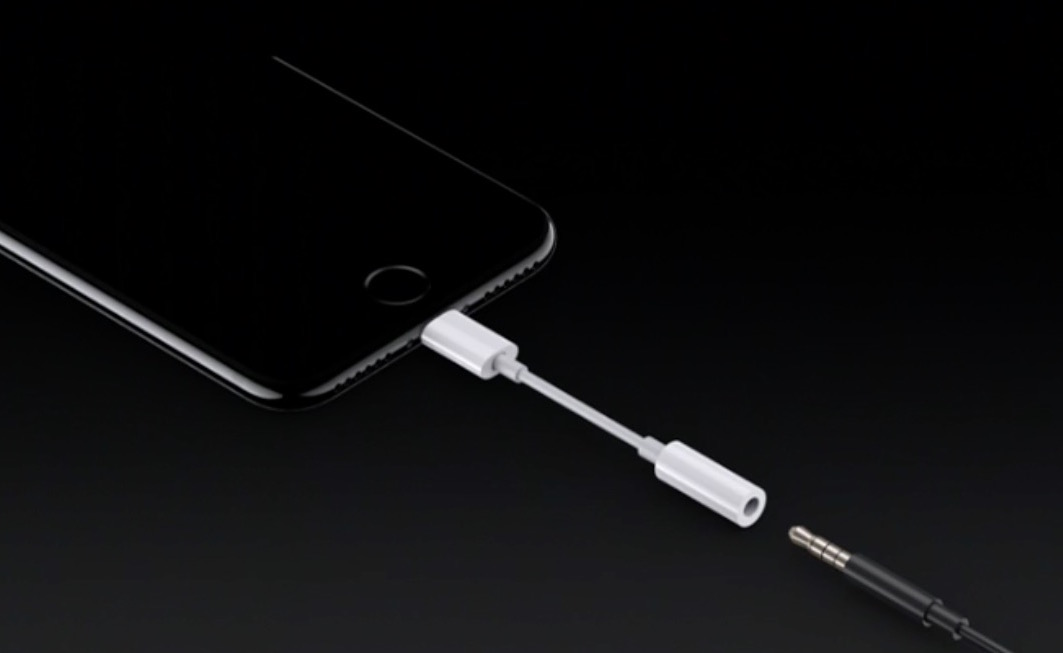Apple’s marketing honcho Phil Schiller said during yesterday’s iPhone 7 keynote that the company has had the courage and vision to remove the ubiquitous 3.55 mm audio headphone jack from the handset in a forward-thinking move that has allowed its engineers to cram more hardware features inside the handset than ever before.
Schiller, Greg Joswiak and hardware chief Dan Riccio took to BuzzFeed News to list some of the new iPhone 7 features made possible by the abolished jack.
Before we get to the interview, just a quick reminder: the new iPhones ship with a wired edition of Apple’s existing EarPods that plug into the handsets Lightning I/O and a Lightning-to-3.55mm adapter so that everyone can connect their legacy headphones without paying extra for a third-party dongle.
It’s a “dinosaur”
“The audio connector is more than 100 years old,” said Greg Joswiak, who handles iPhone and iPad marketing at Apple. “It had its last big innovation about 50 years ago. You know what that was? They made it smaller. It hasn’t been touched since then. It’s a dinosaur. It’s time to move on.”
Dan Riccio added:
We’ve got this 50-year-old connector—just a hole filled with air—and it’s just sitting there taking up space, really valuable space. It was holding us back from a number of things we wanted to put into the iPhone. It was fighting for space with camera technologies and processors and battery life. And frankly, when there’s a better, modern solution available, it’s crazy to keep it around.
But what are some of the things they wanted to do but couldn’t because the headphone jack was taking up a lot of space inside the device? Four things: more advanced cameras, an enhanced Taptic Engine, water resistance and a longer-lasting battery.
Creating enhanced cameras
The back camera on the 4.7-inch iPhone 7 now has optical image stabilization (OIS), a feature that normalizes shaky footage and blurry photos that was exclusive to the iPhone 6 Plus/6s Plus due to the lack of space in 4.7-inch phones for it. Removing the jack from the phone has now made OIS possible on the smaller model.
It’s also allowed for an advanced camera system on the bigger phone that has two lenses, one a fixed wide-angle one and the other a 2x zoom telephoto lens.
Better Taptic Engine
BuzzFeed explains:
At the top of both devices is something called the “driver ledge”—a small printed circuit board that drives the iPhone’s display and its backlight. Historically, Apple placed it there to accommodate improvements in battery capacity, where it was out of the way.
But according to Riccio, the driver ledge interfered with the iPhone 7 line’s new larger camera systems, so Apple moved the ledge lower in both devices. But there, it interfered with other components, particularly the audio jack.
In removing the jack, they were also able to relocate the drive ledge from the top to the bottom of the handset and install an enhanced Taptic Engine that now provides a more nuanced range of haptic feedback and clicking sensation for the handset’s new pressure-sensitive Home button.
Water resistance and longer run time
As a bonus, the abolished jack has eliminated a key point of ingress that Riccio says helped the iPhone 7 finally meet the IP7 water resistance, allowing it to be immersed under one meter of water for up to 30 minutes.
And last but not least, they were able to increase battery life by giving the iPhone 7 a fourteen percent bigger battery and five percent bigger on the iPhone 7 Plus to provide an additional two hours and one hour of run time, respectively—essentially creating the most battery-efficient iPhone to date.
Ulterior motive? That’s “conspiracy theory”
Schiller waved off suggestion that going all wireless poses the risk of Apple potentially implementing Digital-Rights Management (DRM) on the audio port down the road.
The idea that there’s some ulterior motive behind this move, or that it will usher in some new form of content management, it simply isn’t true. We are removing the audio jack because we have developed a better way to deliver audio. It has nothing to do with content management or DRM—that’s pure, paranoid conspiracy theory.
It’s going to be a rocky transition
He acknowledged though that the transition may tick off some people:
We do understand that this might be a difficult transition for some people who love their wired headphones. But the transition is inevitable. You’ve got to do it at some point. Sooner or later the headphone jack is going away. There are just too many reasons aligned against it sticking around any longer.
There’s a little bit of pain in every transition, but we can’t let that stop us from making it. If we did, we’d never make any progress at all. The question we ask ourselves when making transitions like these is, have we done all the right things to mitigate it and to explain it and to make what’s on the other side so good that everyone is happy with the change? We think we’ve done that.
This all happened before
And just like Apple was first to get rid of outdated technologies like parallel ports, the serial bus and floppy drives, Schiller is adamant that we’ll at some point “look back at the furor over the headphone jack and wonder what the big deal was.”
In other words, the new iPhone 7 features wouldn’t be possible if it weren’t for the space freed up by the abolished headphone jack. And now there’s no turning back—in fact, two premium Android phones recently shipped without the audio jack.
How long before the industry follows in Apple’s footsteps, do you think?
Source: BuzzFeed News
